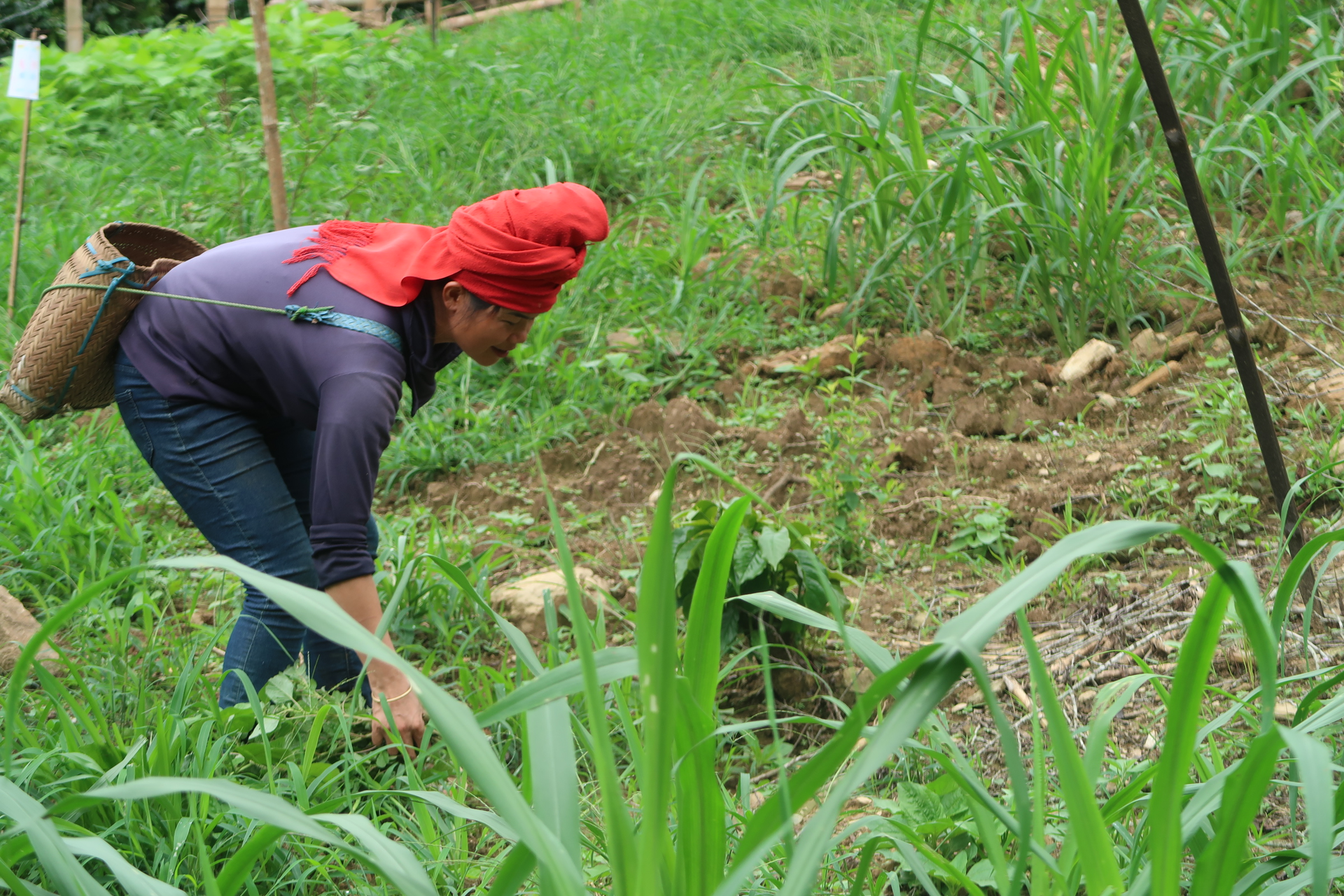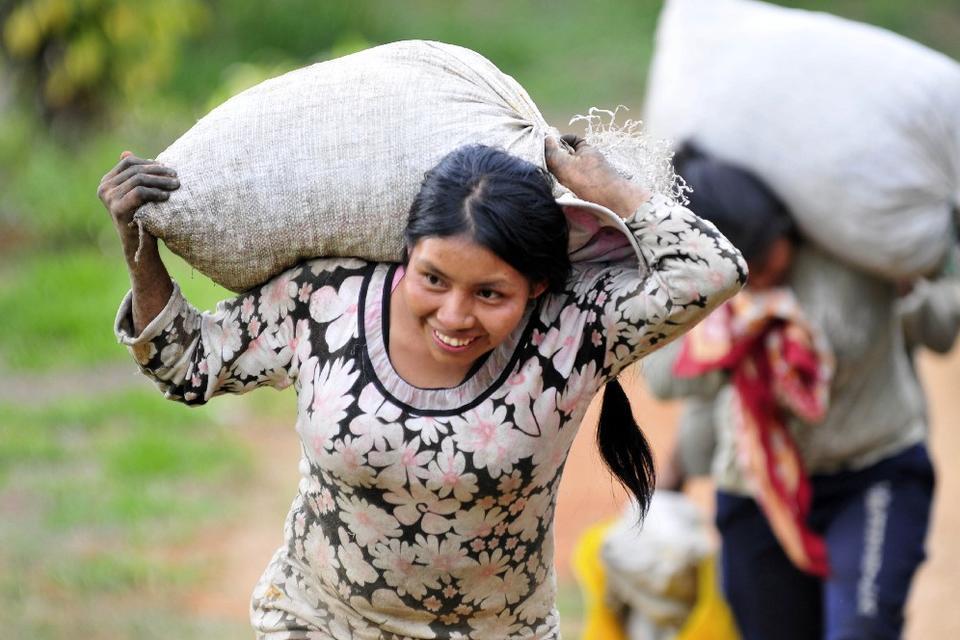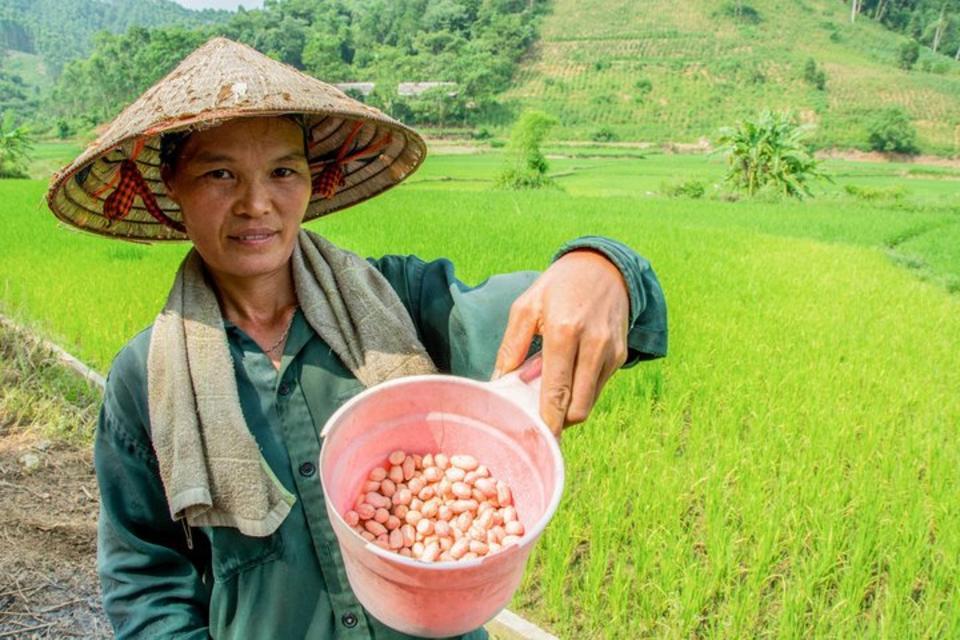From the Field Winter is coming: How to sustainably feed livestock in Northwestern Vietnam

As scarce feed sources continue to threaten livestock production in Vietnam’s Northwestern Highlands, the Alliance and its partners are exploring ways to sustain production and guarantee ongoing livestock productivity and efficiency all year around, especially during the winter.
In the Northwest Highlands of Vietnam, livestock such as cattle and buffalo often graze on native pasture on the vast communal land and forests in the uplands. Yet, as winter arrives, livestock producers prepare themselves to confront a familiar challenge that arises: livestock feed shortage.
Livestock production is a critical agricultural activity in Vietnam. In fact, the subsector has provided a socially stabilizing force, providing livelihoods for many people — especially from ethnic minorities — in the context of rapidly changing macroeconomic conditions both in the country and globally. Recently, the livestock industry has faced growing challenges over repeated patterns of scarce feed sources to low livestock outputs, targeting the intersection of animal nutrition, livestock productivity, and the environment. But without sufficient feed during the winter, farmers struggle to meet market demands.
Tracing the roots of this persistent issue requires experts to understand that in livestock production, the problem stems literally from the ground up.
Quality + Quantity = Sustainability
Livestock production in Vietnam is mainly practiced by smallholder farmers, who largely rely on native pastures, crop residues, and free grazing on communal land and forests for their animals’ nutrition. While there are still many farms subscribing to a semi-grazing feeding system, which supplements animals’ diet with cut-and-carry native grass, planted grass, and crop by-products (e.g. rice straw, maize stover, sugarcane tops), researchers observe growing interest and prioritization of quantity over quality of forage grasses.
This recurring pattern of dependence on forage quantity continues to widen the gap in sustaining livestock production as both native and grown grasses see huge decline in quantity and quality during winter. Crop by-products similarly fall in supply during the colder season. If this trend continues, livestock would fall short of meeting their required nutritional status, and they are also expected to perform poorly in terms of production, as observed by scientists from the National Institute of Animal Sciences (NIAS).
“Smallholder farms play [an] extremely important [role] because they account for more than 50% of livestock production [in Vietnam]...We hope that we can improve the competitiveness of small farms in the market, and help them have the chance to apply the innovation technology in the production,” - Le Thi Huyen, NIAS Senior Scientist Assoc. Prof.

The Alliance team visits one of SAPLING's forage demo farms, which grows improved forage varieties including Mun River (Megathyrus maximus cv. Mun River) in the middle plot. Photo by: Hang Thi Dao
Triple impact
As feed shortages continue to threaten livestock production in Vietnam’s northern highlands, the Alliance of Bioversity International and CIAT’s Tropical Forages Program (TFP), NIAS, the International Livestock Research Institute, and other subnational Vietnamese partners have joined forces to promote and evaluate improved forages and feed technologies in Son La province.
Through the Li-chăn project (Livestock CRP), from 2019-2021 the Alliance and its partners promoted improved forage varieties in ethnic minority communities in this northwestern province. The high-quality and high-yield forage varieties were targeted to sustainably transform the communities’ agricultural landscapes, boosting animal nutrition, health, and genetics, to achieve significantly high livestock outputs in the long run. In addition, the promoted varieties are more tolerant to drought and cool temperatures, which ensures quality feed availability all year around while supporting farmers to confront limited feed and forage sources during the winter. According to Michael Peters - Global Lead of the Alliance's TFP:
“The Tropical Forages Program of the Alliance has a 45-year history of developing a range of eco-efficient forage options that can be grown under a range of favorable to marginal environments in the tropics, including germplasm evaluation, participatory research and extension, and scaling. The Alliance's forages group is among the leaders in tropical forage research, mainly for livestock systems but also for integrated Crop-Livestock-Tree (CLT) Systems,”
According to Mary Atieno - the Alliance’s TFP Asia Lead - this comparative advantage has placed the TFP in the best position to lead initiatives on crop-livestock systems in Vietnam and the region. Past studies and projects in Southeast Asia have reported the adoption of improved forages by more than 40,000 farmers, thus benefiting from improved livestock productivity, efficiency, and income.
However, where green grass grows, there is more than what meets the eye. For NIAS’ Animal Nutrition Department Head Dr. Tran Thi Bich Ngoc, the new forage varieties sustainably ensure both productivity and environmental stability. Once established, the forages enable significant improvement in soil fertility, which, in turn, reduces the use of chemical fertilizers and avoids soil erosion. With better soil health, farmers can guarantee high-quality feed for their animals all year around.
“Working together in research to discover suitable forage varieties for different contexts is very important. It will certainly help build sustainability in livestock production, because in Vietnam the feed price is very high [accounting for] more than 70% of production cost. So, if we solve the problem of high production costs, the availability of local feed will be very beneficial [to smallholder farmers].”

SAPLING Initiative
Leveraging on the piloted interventions from the Li-chăn project, the Alliance continues to scale up its efforts in advancing sustainable livestock production in Vietnam. Within CGIAR’s Sustainable Animal Productivity for Livelihoods, Nutrition, and Gender Inclusion (SAPLING) initiative, we can improve livestock management and productivity through a research partnership with NIAS in characterizing livestock production systems and coming up with potential solutions to address context-specific feed-related challenges.
SAPLING initiative in Vietnam, also known as Chăn-hênh (meaning better in Thai dialect), aims to enable smallholder farmers in cattle and pig productions to participate in inclusive value chains to achieve sustainable productivity gains. The initiative underscores the need to bridge the gaps in securing sustained livestock outputs while keeping value chains competitive through new and existing demand-driven innovations on feeds and forages, animal health, genetics, and market systems.
Changing mindsets
Despite recent initiatives to transform livestock production, the Alliance and NIAS have identified one of the major existing challenges thus far: changing stakeholders’ mindsets. While smallholder livestock growers in Son La province have undergone various capacity building activities on animal nutrition techniques (i.e., feed processing and preservation, feed mix and feeding regimes for cattle and pigs), both organizations recognize the importance of continued coordination with all actors in the livestock value chain to help influence them in adopting and prioritizing sustainable practices. These targeted initiatives are expected to further accelerate efforts in bolstering production while reducing adverse environmental impacts.
Interventions like biogas digesters deployed by the Vietnamese government to properly manage livestock waste and limit greenhouse emissions from production were found to be inefficient in mitigating greenhouse gas emissions for both small-scale and large-scale pig productions, according to research of the Alliance and partners in 2020. Results of the collaborative work urge reduction of pig density as well as the application of other alternative digestion technologies including vermicompost, composting, and effective microorganisms. Crop residues have also been explored as alternatives to supplement animal diets as many farmers still rely on these agricultural wastes when feed supply runs out. And in bolstering adaptability amid various local conditions, the use of artificial insemination is being amplified to enhance breeding techniques in larger cattle and pig productions, among others.
With over seven million tons of meat produced between August 2022 to January 2023 for the Lunar New Year, it is likely that the demand for common meat products in Vietnam would increase despite soaring prices, as many consumers are opting for meat over starchy staples. With proper and efficient implementation of these transformative animal nutrition intervention initiatives, there will be more opportunities for better livelihoods, higher incomes, and healthier environment where farmers take up space in a productive, equitable, and sustainable livestock value chain.



